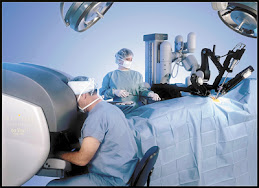http://www.lexisnexis.com.revproxy.brown.edu/us/lnacademic/results/docview/docview.do?risb=21_T2479674183&format=GNBFI&sort=RELEVANCE&startDocNo=1&resultsUrlKey=29_T2479674189&cisb=22_T2479674188&treeMax=true&treeWidth=0&csi=151977&docNo=12
Article in New Straits Times
April 11th, 2006
We knew that robotic surgery was an emerging field, but we weren’t really clear on what components actually make up a robotic system and how it functions. This article that we found focused on the only robotic system to get approved for any surgery as of late 2005, the da Vinci robotic system, which was approved by the Food and Drug Administration in July 2000. Other robotic systems may have been approved more recently, and thus we will continue to look for new robotic systems.
This article provided us with valuable information about the da Vinci. Interestingly enough, it was first developed for Nasa, but now it is commonly used for prostratectomy, and is approved for other urological, gynaecological, and cardiothoraric surgeries.
The way it works is that a surgeon is able to operate a set of controls with his hands and feet that works the small-scaled instruments, which have advanced surgical instruments and cameras attached to them. Thus, these micro-movements not only provide precision and dexterity, but also a minimally invasive surgical procedure, meaning less blood, pain, and a shorter recovery time. Furthermore, a robotic system provides one solution to the sanitation that is a big problem during surgeries.
These benefits, as well as others such as reduced operation time and the fact that the da Vinci can be a valuable teaching tool for surgical fellows, have many doctors excited about the upcoming field of robotic surgery. One downfall involves a malfunctioning of the machine, which one doctor says can be easily bypassed since doctors can stop the machine and perform the surgery themselves.
Subscribe to:
Post Comments (Atom)

No comments:
Post a Comment